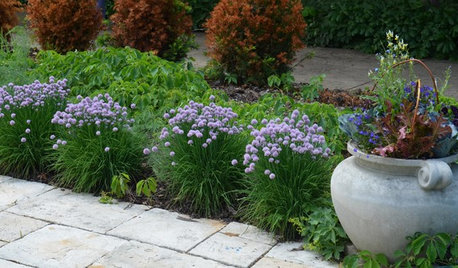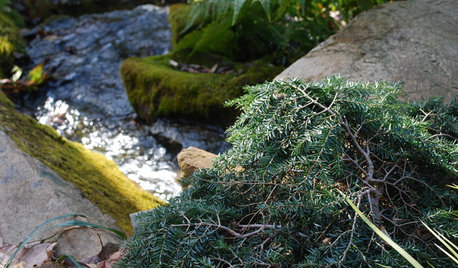Pepper plant insecticide question
lmatt
9 years ago
Related Stories

EDIBLE GARDENSGarden BFFs? Why Your Vegetables Are Begging for Companion Plants
Foster friendships among plants for protection from pests, pollination support and color camaraderie
Full Story
GARDENING GUIDESMake Sure You Read This Before Buying New Plants
Follow these 10 plant-selection tips to avoid buyer’s remorse
Full Story
GARDENING GUIDESWe Bust 4 More Native Plant Myths
Have you been taken in by these fallacies about gardening with native plants?
Full Story
GARDENING GUIDESGreat Garden Combo: 3 Wonderful Plants for a Deer-Resistant Screen
Protect your privacy and keep deer at bay with a planting trio that turns a problem garden area into a highlight
Full Story
GARDENING GUIDESEdible Plants That Double as Ornamentals
Try growing these tasty plants with your ornamentals for an attractive garden and fresher meals
Full Story
GARDENING GUIDESSmall Carpenter Bees Are Looking for a Home in Your Plant Stems
Provide flowers and nesting sites in your garden for this beautiful, tiny, metallic blue wild bee — your plants will thank you
Full Story
HOUSEPLANTS8 Essentials for Healthy Indoor Plants
Houseplants add so much to our homes — and can thrive when grown in the right conditions. Keep these tips in mind
Full Story
FARM YOUR YARDHow to Build a Raised Bed for Your Veggies and Plants
Whether you’re farming your parking strip or beautifying your backyard, a planting box you make yourself can come in mighty handy
Full Story
GARDENING GUIDESGreat Design Plant: Tsuga Canadensis ‘Bennett’
Bennett Canadian hemlock thrives in shade and provides sculptural interest in eastern U.S. gardens
Full Story
FOLIAGEGreat Design Plant: Ornamental Sweet Potato Vine
Versatile, fast growing, inexpensive and easy on the eyes, ornamental sweet potato vine has it all
Full StorySponsored
Industry Leading Interior Designers & Decorators in Franklin County
More Discussions






woohooman San Diego CA zone 10a
lmattOriginal Author
Related Professionals
Fitchburg Landscape Architects & Landscape Designers · Suffern Landscape Architects & Landscape Designers · Wareham Landscape Architects & Landscape Designers · Wixom Landscape Architects & Landscape Designers · Lyndhurst Landscape Contractors · Mercedes Landscape Contractors · Methuen Landscape Contractors · Oakland Landscape Contractors · Paso Robles Landscape Contractors · Ramsey Landscape Contractors · Seven Hills Landscape Contractors · Woodbury Landscape Contractors · Quartz Hill Landscape Contractors · Camp Springs Landscape Contractors · Gulf Gate Estates Tree Serviceswoohooman San Diego CA zone 10a
northeast_chileman
seysonn
esox07 (4b) Wisconsin
ronnyb123
woohooman San Diego CA zone 10a
ronnyb123
seysonn
woohooman San Diego CA zone 10a